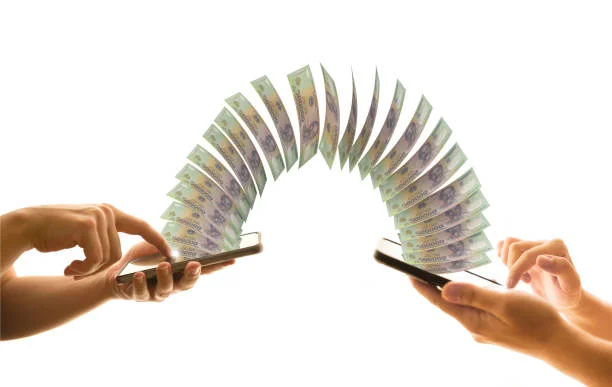Vietnam’s e-commerce is scaling fast, while you navigate a checkout reality that has gone cash-lite almost overnight. You see patchy acceptance outside major cities, checkout flows that ask for too many taps, and evolving rules that leave you wondering whether your setup is compliant. Against that backdrop, Antom supports payments in Vietnam, helping merchants adapt as the growing role of digital wallets reshapes how you design carts, settle funds, and handle refunds—from Hanoi to the Mekong Delta. As QR rails and mobile banking mature, wallets and instant transfers are no longer optional; they are how shoppers expect to pay.
Choosing Payment Partners that Fit Vietnam’s Rails
To build on Vietnam’s payment rails—VietQR, NAPAS FastFund 24/7 instant transfers, and interoperable QR—pick providers that integrate natively and cover eKYC, refunds, and end‑to‑end dispute handling. Payment providers—like Antom—help benchmark what “good” looks like. In practice, you’ll also encounter global processors such as Worldpay and Adyen that offer orchestration and intelligent routing; focus less on brand names and more on whether the stack supports VietQR and instant transfers, delivers robust risk controls and dispute tooling, and stays current with SBV/NAPAS QR standards and policy updates without extra friction.
Dive deeper — this related post uncovers the next layer of the story.
Executive Snapshot of Vietnam’s Digital Payments Landscape
Digital commerce now rides on bank‑linked apps and QR codes as much as on cards. In the first 11 months of 2024, non‑cash payment transactions in Vietnam grew 56.8% by volume and 33.7% by value year‑on‑year, while QR code payments jumped 106.7% by volume and 84.8% by value. For you, that translates into higher wallet share in the cart, more frequent instant bank transfers, and rising expectations for immediate confirmations and fast refunds.
Urban vs. Rural Adoption Patterns
Wallets and QR are embedded in daily life in Hanoi and Ho Chi Minh City, where dense merchant networks and visible QR signage reinforce habit. Outside the big metros, you still face connectivity gaps and onboarding barriers, so cash and COD remain present. Yet the gap is narrowing as merchant QR acceptance spreads, logistics improve, and consumers become more comfortable with top-ups, bill pay, and small online purchases that transition into regular wallet-led orders.
Urban Centers: Hanoi and Ho Chi Minh City
In urban districts, shoppers expect to see wallet buttons and VietQR by default. Promotions and rewards help, but the real driver is speed: scan, confirm, and you’re done. That expectation carries over into e-commerce, where a mobile-first cart with QR or wallet functionality at the top reduces abandonment and support tickets.
Rural and Remote Areas
In provincial towns and rural communes, you win by pairing COD with clear wallet incentives and by making the first experience feel safe and official (bank‑linked, regulated, and easy to reverse if something goes wrong). Agent networks and on-the-ground education remain important for building trust and repeat use.
Convergence Trends in E-commerce
As fulfillment and connectivity improve, rural buyers are increasingly using wallets for prepaid orders—especially when refunds are made transparent and near-instant. Over time, incentives shift from cash back to a focus on reliable service, including fast confirmations, clean receipts, and hassle-free returns.
Why the Growing Role of Digital Wallets in Vietnamese E-Commerce Matters Now
When you foreground wallet and QR options, you shorten the path from discovery to purchase, particularly on small screens where every extra step costs you conversions. This shift is not a fad; it’s the new default for both marketplace and direct‑to‑consumer flows.
Infrastructure & Rails Shaping Wallet Usage
VietQR (NAPAS)
VietQR offers a unified QR language for banks and wallets, making transfers feel more universal. Across 2024, the NAPAS network processed an average of more than 26 million transactions per day; its instant transfer service (NAPAS 24/7) accounted for roughly 93.5% of the service volume, underscoring the pervasive nature of real-time payments.
Interoperability across Banks and Wallets
Interoperable QR standards reduce fragmentation. A single code that many apps can scan spares you from juggling multiple acceptance points and simplifies training for frontline staff.
Impact on POS and Online Checkout
A unified rail means you can support in‑store and online with the same logic: generate a code, confirm payment in real time, then trigger fulfillment and receipts. For e-commerce peaks and live-stream campaigns, this maintains steady conversions when traffic spikes.
Digital Wallets in Everyday Ecommerce Journeys
Role at Checkout
Wallets and instant bank transfers are often the fastest route to “paid.” When you place these methods first, you remove typing, reduce errors, and increase the odds that a shopper completes the order on mobile data, not just Wi‑Fi.
Consumer Expectations in E-commerce
Shoppers expect low or transparent fees, instant confirmation, and easy refunds. If you require extra logins or obscure wallet options, you will see higher abandonment rates and an increase in support tickets.
Discovery‑to‑Purchase Flow
From social discovery and chat‑to‑pay to marketplace mini‑apps, embedding QR and wallet options early shortens the journey: chat → cart → scan → confirmation → automated receipt → clear refund status. This same flow works in rural areas where cards are less common.
Link to the Growing Role of Digital Wallets in Vietnamese E-commerce
Designing your PDPs and carts with wallet and QR options above the fold equips you for how people already pay. Over time, you can segment customers by behavior—such as repeat buyers, high AOV shoppers, and COD switchers—and tailor incentives accordingly.
Inclusion Pathways: Addressing Unbanked and Underbanked Needs
Lowering Barriers via Funding Options
Because wallets are typically bank‑linked and top‑up friendly, you can serve buyers without credit cards. That expands demand in categories once dominated by COD.
Rural Accessibility and Onboarding
Simple language, QR signage, and agent‑assisted onboarding help first‑time users. Once customers see that refunds are quick and balances update instantly, wallet trust becomes a habit.
Implications for the Growing Role of Digital Wallets in Vietnamese E-commerce
As rails become ubiquitous, you can phase down COD promotions and lean into prepaid incentives, especially for repeat purchases and subscriptions.
E-commerce Behavior Shaping Payment Design
Mobile‑First Shopping
Design for small screens first. Keep fields minimal, surface the QR and wallet at the top, and use one-tap pay-by-link to recover stalled checkouts over chat.
Category Dynamics
Fast-moving categories (F&B, convenience, and beauty) gain the most from instant wallet flows. Higher-ticket verticals tend to benefit from dynamic QR codes and staged payments, which allow shoppers to confirm details without anxiety.
Experience Drivers and Pain Points
What works: visible wallet options, transparent fees, instant receipts, and self‑service refund tracking. What hurts: hidden charges, QR codes that won’t scan, forced app switching, and extra passwords mid‑flow.
Implications for Merchants
| Goal | What you should do | Why it helps |
| Acceptance mix | Support VietQR and leading bank‑app wallets; display badges early on PDPs and in the cart. | You meet shoppers where they already pay and reduce last‑mile drop‑offs. |
| Checkout optimization | Place wallet/QR first; use dynamic QR or pay-by-link for long-tail SKUs and social commerce. | Fewer steps mean fewer abandonments, especially on mobile. |
| Rural reach | Pair COD with wallet incentives; train pickup points and agents to promote QR code usage during collection. | You build habits outside big cities and lower cash handling. |
| Risk and compliance | Map KYC, AML, and refund policies to local guidance; document controls. | You minimize regulatory friction and preserve customer trust. |
| Cross‑border readiness | Track QR interoperability with regional partners and prepare for inbound travelers. | One scan for tourists can lift conversion and average basket size. |
Conclusion
Vietnam’s e-commerce is decisively moving toward wallet- and QR-led payments. You’ve seen how rails like VietQR and NAPAS, clearer rules under Decree 52, and mobile‑first habits make digital wallets the default way to pay. To convert more carts and widen your reach, prioritize an acceptance mix that includes VietQR and leading bank-app wallets. Surface these options first on mobile, and ensure refunds are fast and transparent. In rural markets, consider COD as a bridge while encouraging shoppers to switch to prepaid with clear benefits. Document your controls, track checkout and refund metrics, and prepare for cross-border QR codes. Treat wallets as your primary channel across PDPs, chat, and live streams, and you’ll boost trust, reduce costs, and unlock demand nationwide.
The journey doesn’t end here — explore more topics at 2A Magazine that spark new ideas.







